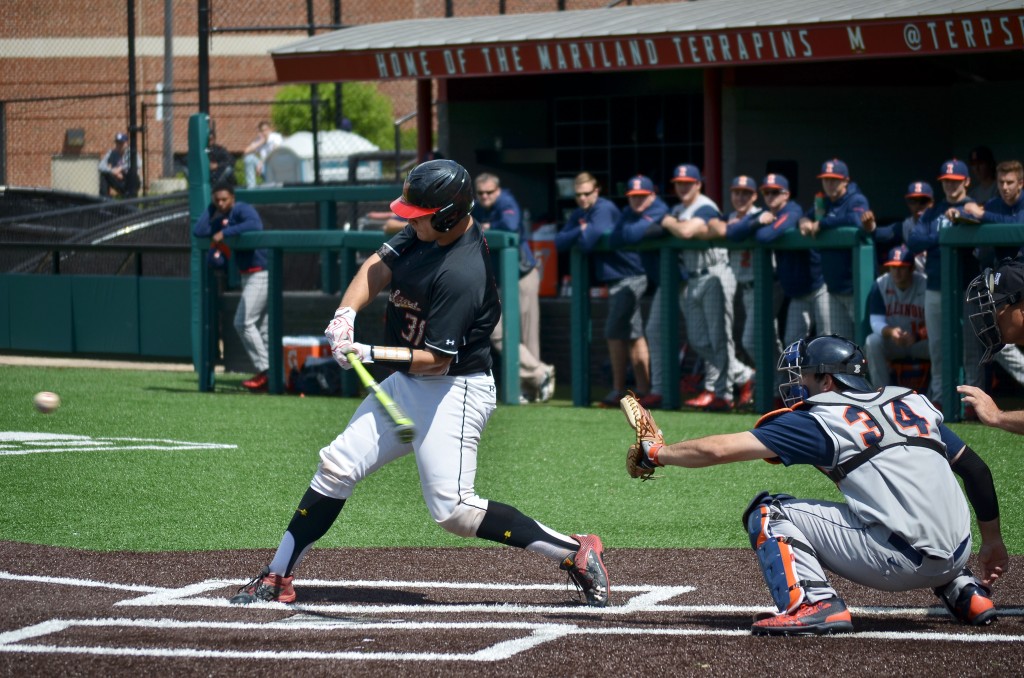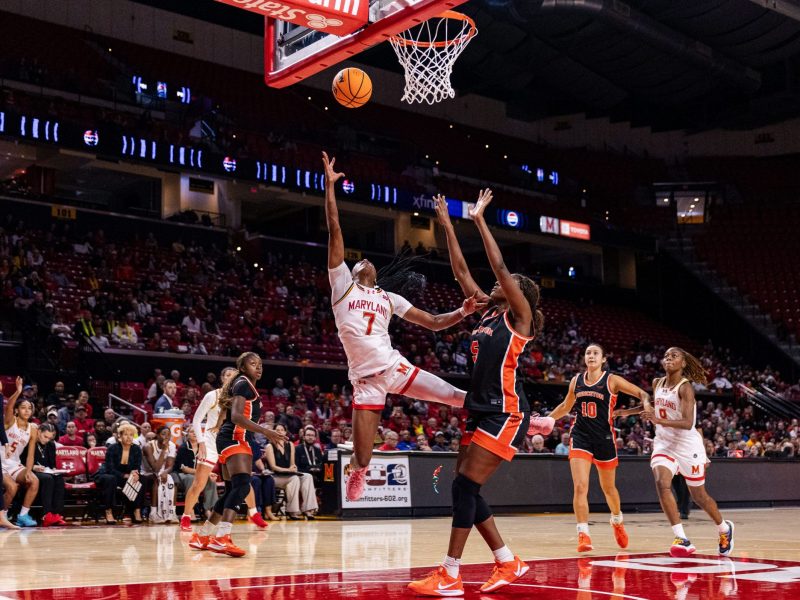During some Maryland baseball practices, hitting coach Rob Vaughn plays a game of “batspeed baseball” with his hitters. The speed of each pitch corresponds to a different hit. Pitches between 90 and 95 mph result in singles and those between 95 and 100 mph result in doubles.
As the game progresses, Vaughn observes his batters are more likely to take a 95 mph pitch because they might be late on the swing. The contest is meant to teach patience at the plate, Vaughn said.
The batspeed game has influenced the Terps offense, creating a more composed approach and contributing to the unit’s early success entering a three-game series against Princeton this weekend. Coach John Szefc’s squad has walked 93 times this season, which ranks 19th in the country and leads the Big Ten.
“We’re never entering the box in take mode,” Vaughn said. “It surprises me a little that we do lead the Big Ten … We make sure we understand the strike zone, run off a good mental plan with two strikes and put the fear of God in the pitcher with [our] swings. That takes care if it.”
After averaging more than four walks per game last season, the Terps are drawing about six per contest through their first 15 games. First baseman Brandon Gum, a transfer from George Mason, said he first noticed the frequent walks in Maryland’s 9-2 win over NC State on March 4.
The Terps drew three consecutive walks against Wolfpack right-hander Cory Wilder, the last of which drove in a run. Gum’s bases-loaded walk knocked Wilder out of the game before he recorded an out. That contest sparked a seven-game winning streak when Maryland scored at least four runs in every matchup.
“One through nine, we are all pretty much seeing the same 2-1 breaking balls and 2-0 sliders,” Gum said. “It shows teams can get beat by anyone in our lineup. That’s the difference between any team I’ve played on. Never had a full lineup where [the pitcher is always] worried about the next guy.”
In addition to the batspeed challenge Vaughn organizes, the Terps practice different types of pitches. Their goal is to take breaking balls low in the strike zone and fastballs off the plate. Vaughn works to ensure his hitters swing at just strikes. When an umpire calls a strike, he yells “thighs up” to reiterate the length of the strike zone.
Maryland’s hitters have responded by creating opportunities, even when an opposing pitcher is in control. Though second baseman Nick Dunn earned the Terps’ lone hit in Tuesday’s 9-2 loss to No. 13 North Carolina, Maryland put men in scoring position by drawing consecutive walks in the third and sixth innings.
“Everybody can get on base much more than last year’s team,” designated hitter Nick Cieri said. “…You have to get on in different ways. Small ball stuff. When you play great teams, you’re not going to get hit after hit.”
As Vaughn teaches Maryland’s hitters to become more patient at the plate, he reduces the number of changes they should make during each at-bat. If a hitter is in a two-strike count, there is more of a mental adjustment rather than changing the placement of hands on the bat, he said.
But Vaughn emphasizes solid contact on each swing because even on a foul ball, the Terps can intimidate a pitcher. Then, the hurler is less likely to command the zone.
“We’ve had some good teams in the past and good players in the past, but one through 12 with this group has been pretty fun,” Vaughn said. “This is one of the first years where it hasn’t been like, ‘Let’s get through this inning, we have the top half coming up next time.’ Half the time I can’t tell who is at the top and who is at the bottom. Guys are just wearing it out and doing that.”



